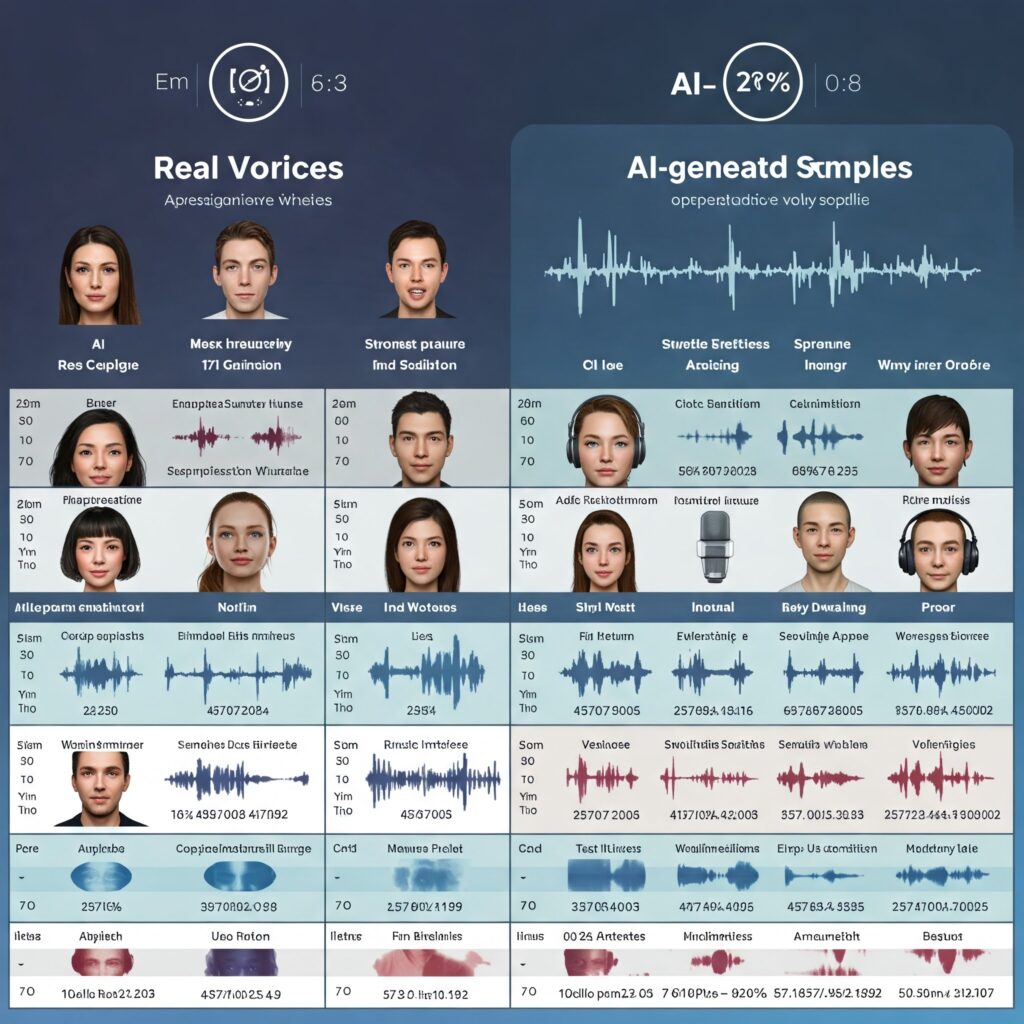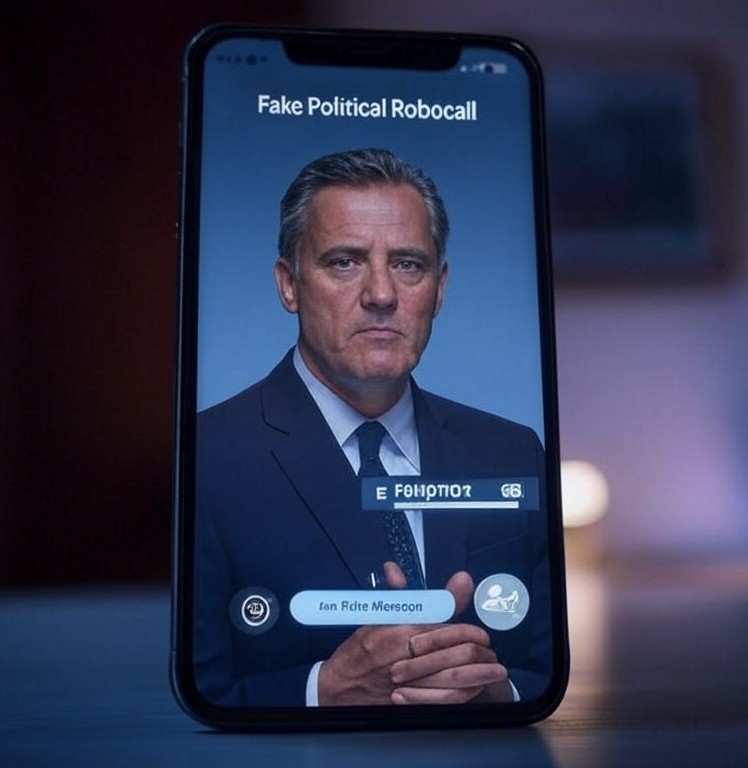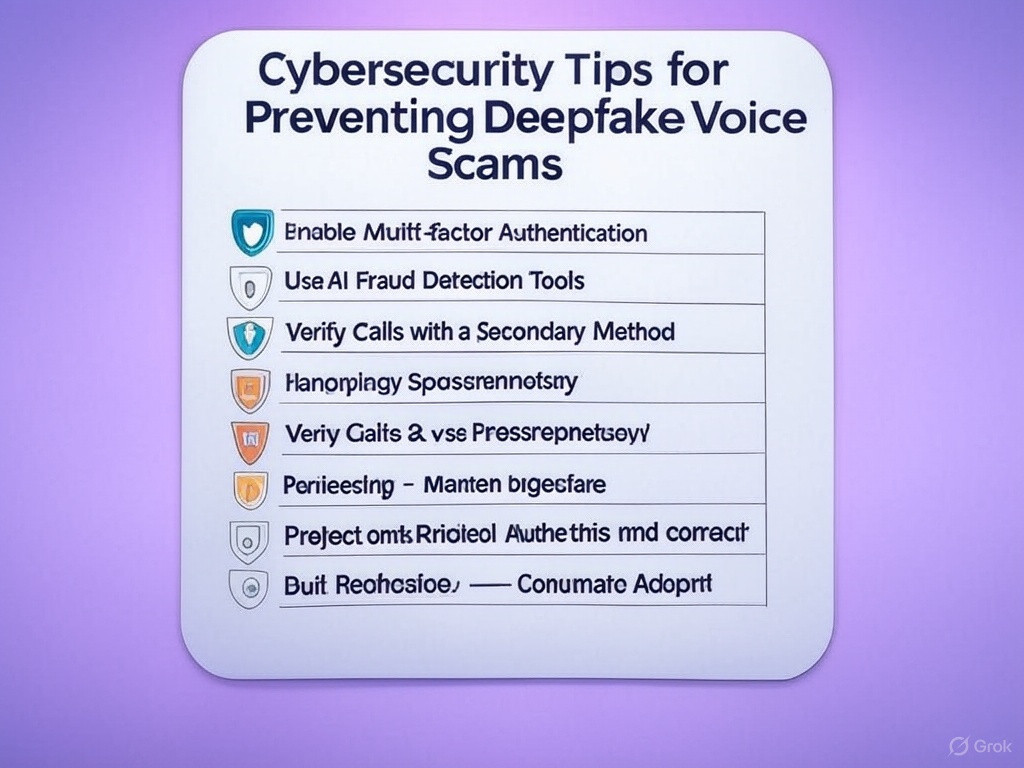
Artificial intelligence has unlocked remarkable advancements in voice synthesis, making it easier than ever to replicate human voices with near-perfect accuracy. While this technology has promising applications for accessibility, entertainment, and automation, it has also introduced a powerful tool for scammers. AI voice-cloning scams have surged, with bad actors using synthetic voices to impersonate loved ones, executives, and public figures—exploiting trust and triggering emotional responses for financial gain.
Key Takeaways
- AI voice-cloning scams are rapidly increasing, making it easier for scammers to impersonate trusted individuals and manipulate victims.
- Common scams include the ‘Granny Scam,’ corporate impersonation, and AI-powered phishing attacks, all of which exploit voice deepfake technology.
- Real-world cases show the severity of these scams, with victims losing tens of thousands of dollars due to AI-generated fraud.
- AI-powered cybersecurity solutions are evolving, including deepfake detection, voice biometrics, and fraud detection tools.
- Individuals and businesses must implement proactive security measures, such as multi-factor authentication, VPNs, and anti-spoofing algorithms, to mitigate risks.
- Regulations are struggling to keep up with AI advancements, making public awareness and cybersecurity vigilance crucial.
How AI Voice-Cloning Scams Work

With just a few seconds of publicly available audio, AI voice-cloning tools can generate a realistic copy of someone’s voice. Scammers leverage this technology to carry out a variety of fraud schemes, including:
- The “Granny Scam” – Fraudsters mimic the voices of family members, claiming to be in distress and in urgent need of money.
- Corporate Impersonation – Attackers pose as executives or employees to manipulate organizations into wiring funds or divulging sensitive information.
- Political and Social Manipulation – Deepfake voices of politicians, celebrities, or influencers are used in misleading robocalls or social media content.
- Call Center Exploitation – Attackers use AI-generated voices to bypass customer service security checks and gain unauthorized access to sensitive accounts.
- Ransom Scams – Criminals simulate the voices of kidnapped victims to extort money from their families.
For a deeper dive into how deepfake technology is evolving, check out our related article: Top 5 Breakthrough AI-Powered Cybersecurity Tools Protecting Businesses in 2025.
Notable Incidents
Several real-world cases highlight the severity of AI voice-cloning scams:

- Elderly California Man Defrauded: Scammers used AI to clone a man’s son’s voice, claiming he was in a severe accident and needed bail money, resulting in a $25,000 loss. (ABC7)
- Grandmother Scammed by Fake MSNBC Anchor: A 73-year-old woman was deceived into sending $20,000 in gift cards to a scammer impersonating an MSNBC anchor using AI-generated voice messages. (The Sun)
- AI-Generated Political Robocalls: During the New Hampshire Democratic primary, voters received robocalls featuring an AI-generated voice impersonating President Joe Biden, advising them not to vote. (NPR)

For more cybersecurity threats tied to AI, explore Shocking AI-Powered Cybersecurity Threats in 2025: Protect Yourself Against New Advanced Attacks.
Emerging Trends & Future Threats

As AI-generated audio surpasses the “uncanny valley” and becomes indistinguishable from real voices, cybersecurity experts predict that scams will become more complex. Threat actors may begin integrating AI voice-cloning with:
- AI-powered phishing attacks – Personalized deepfake calls could replace traditional phishing emails.
- Synthetic identity fraud – Combining AI-generated voices with deepfake video could lead to more convincing impersonation attacks.
- Autonomous AI scams – Self-learning AI systems may automate voice-cloning fraud at scale.
- AI-enhanced ransomware – Attackers may use AI-generated voice messages to manipulate victims into complying with ransom demands.
Affiliate Disclosure: This post contains affiliate links. If you purchase through these links, we may earn a small commission at no extra cost to you. We only recommend products we trust and use ourselves. Learn more about our affiliate policy.
The Role of AI in Defense
AI, while a tool for cybercriminals, also provides solutions for combating these threats. Advanced fraud detection algorithms can:
- Detect anomalies in voice patterns – AI can analyze speech cadence, intonation, and background noise to identify synthetic voices.
- Implement audio watermarking – Embedding inaudible signals in voice data can help trace and authenticate legitimate recordings.
- Strengthen biometric security – Voice authentication systems must integrate multiple layers of verification to counter cloning attempts.
- Develop real-time deepfake detection – AI-driven voice recognition can detect and flag potential fake audio content.
- Enhance law enforcement tools – AI-powered forensic analysis can help investigators trace and identify the origins of fraudulent voice recordings.

Use a security extension to block phishing attempts – AI-powered scams often rely on malicious links sent through email, text, or fake websites. Guard.io helps protect you by blocking suspicious sites, detecting malicious browser extensions, and preventing phishing scams before they happen.
Protect Yourself from AI Voice-Cloning Scams
Given the increasing sophistication of AI-driven scams, individuals and businesses must adopt proactive cybersecurity strategies:

For Businesses & Security Professionals:
- Deploy AI-driven fraud detection tools – Machine learning-based authentication can help flag anomalies in voice-based transactions.
- Require multi-factor authentication (MFA) – Implementing MFA in customer verification processes can reduce fraudulent access.
- Educate employees on deepfake threats – Cybersecurity training should include awareness of voice cloning and deepfake fraud.
- Use voice biometrics – Advanced AI can analyze minute details in vocal patterns to distinguish between real and cloned voices.
- Develop anti-spoofing algorithms – Implementing fraud detection software that can identify AI-generated voices and protect sensitive accounts.
For Individuals:
- Use a family code word – A secret phrase known only to close family can help verify identities in emergencies. (Wired)
- Verify suspicious calls independently – If you receive a distress call, hang up and call the individual back using a known number.
- Avoid sharing excessive voice data online – Limiting public voice recordings can reduce exposure to AI-cloning risks.
- Enable call authentication features – Some phone carriers offer verification systems that label genuine calls from fraudulent ones.
- Report suspected AI scams – Inform authorities and cybersecurity organizations if you encounter an AI-generated scam attempt.
- Use a VPN for added protection – Proton VPN, NordVPN, and SurfShark provide encrypted browsing to secure personal data.
- Secure your online accounts – Use a password manager to prevent unauthorized access such as NordPass or Proton Pass ensure safe password management and anti-tracking features.
Conclusion

AI voice-cloning technology is evolving rapidly, outpacing regulatory measures and making it imperative for individuals and businesses to remain vigilant. While this innovation has legitimate benefits, its misuse presents serious financial and security risks. Fraudsters are continuously refining their techniques, making public awareness, robust security measures, and AI-driven fraud detection tools essential in combating these threats.
Would you trust a voice on the phone without verification? Share your thoughts in the comments below.
As AI-powered phishing attacks and deepfake fraud continue to rise, staying informed and implementing strong cybersecurity defenses will be key to protecting personal and organizational security.
🔐 Sign up for our cybersecurity newsletter and updates here →
FAQ: AI Voice-Cloning Scams
1. How do AI voice-cloning scams work?
Scammers use AI-generated audio to impersonate trusted individuals, tricking victims into sending money, revealing sensitive information, or taking actions based on fraudulent claims.
2. What are the biggest cybersecurity threats related to AI voice-cloning?
Major threats include identity theft, corporate fraud, AI-powered phishing attacks, and deepfake fraud used for financial scams or misinformation campaigns.
3. How can individuals protect themselves from AI-driven fraud detection bypassing security?
Using multi-factor authentication, voice biometric security, and verifying suspicious calls can help prevent AI-driven scams.
4. What businesses are most at risk from AI voice-cloning scams?
Financial institutions, call centers, and executive-level communications are primary targets due to their reliance on voice authentication.
